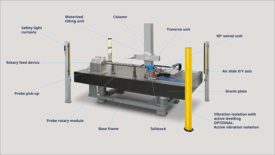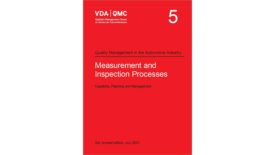Home » Keywords: » ISO standards
Items Tagged with 'ISO standards'
ARTICLES
Management
One way to reframe this seemingly new push into climate change is to simply consider that your organization has been hunting for methods for years to improve operations.
Read More
Quality 4.0 | Dr. Milton Krivokuca
Developing a Quality 4.0 Quality Management System
The value of a QMS is its ability to be flexible in supporting continuous improvement and assuring customers are satisfied.
April 17, 2024
Column | John Vandenbemden
Climate Change and Management Standards
The integration of climate change considerations into the international standards highlights the need to acknowledge the impact it is having on our external environment.
April 9, 2024
Column | John Vandenbemden
Is Customer Satisfaction Dead?
Human nature requires face-to-face interaction as a key component for happiness.
March 28, 2024
Measurement
Efficient production: How to measure shafts automatically with advanced measuring systems
Highest measuring accuracy in roughness measurement
March 18, 2024
Column | John Vandenbemden
The Standard Explained: What is ISO 17025: 2017?
March 11, 2024
Medical
Evolving Needle-Based Drug Delivery Products & Testing Methods
When testing the emerging wearable devices, manufacturers are now confronted with various new and unique challenges.
February 16, 2024
Standards 101 | Roderick A. Munro
Training Auditors to Integrated MSS Requirements
There are a few things that could be useful in your internal training program.
January 29, 2024
Measurement
The new VDA Volume 5 – Obligation and Opportunity
Too much measurement uncertainty leads to incorrect conformity decisions, incorrect assessment of machines and production processes, poorer process quality and thus, increased production and testing effort.
December 29, 2023
Test & Inspection
An Introduction to Dynamic Micro-indentation Measurements
This article will highlight the broad applicability of the dynamic hardness technique.
December 21, 2023
Get our new eMagazine delivered to your inbox every month.
Stay in the know with Quality’s comprehensive coverage of the manufacturing and metrology industries.
SIGN UP TODAY!Copyright ©2024. All Rights Reserved BNP Media.
Design, CMS, Hosting & Web Development :: ePublishing












